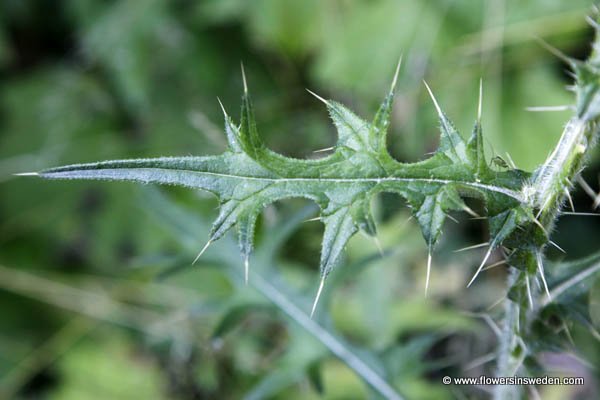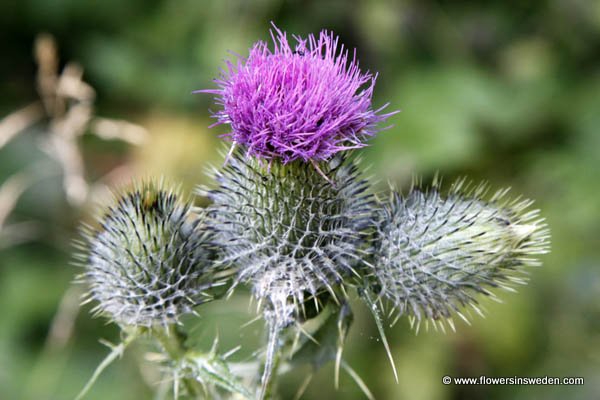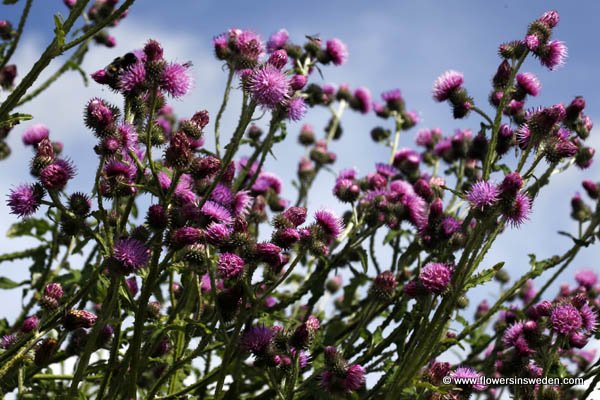|
|
| Life form: |
| Biennial |
| Stems: |
| Height 30-150 cm, erect, winged with spines on the wings; upper surface dark green and bristly, lower surface white woolly |
| Leaves: |
| Rosette, lanceolate to ovate; to 30 cm long and toothed to deeply lobed with spiny margins |
| Inflorescence: |
| Flowerheads 2–5 cm wide, solitary or in groups of 2–4 at the end of branches |
| Flowers: |
| Pink,purple florets all tubular, bisexual; bracts around heads spine-tipped |
| Flowering Period: |
| July, August, September |
| Fruits: |
| An achene with a downy pappus |
| Habitat: |
| Roadsides, pastures |
| Distribution: |
| Common in southern and central Sweden, in the north of the country it occurs more sparingly |

Derivation of the botanical name:
Cirsium, from the Greek word kirsos, "swollen vein". Thistles were used as a remedy against swollen veins.
vulgare, Latin for "common."
- The standard author abbreviation Savi is used to indicate Gaetano Savi (1769 – 1844), an Italian naturalist.[
- The standard author abbreviation Ten. is used to indicate Michele Tenore (1780 – 1861), an Italian botanist.
- The standard author abbreviation L. is used to indicate Carl Linnaeus (1707 – 1778), a Swedish botanist, physician, and zoologist, the father of modern taxonomy.
- The standard author abbreviation Scop, is used to indicate Giovanni Antonio Scopoli (1723 – 1788), an Austrian (Tyrolean) physician and naturalist.



|





